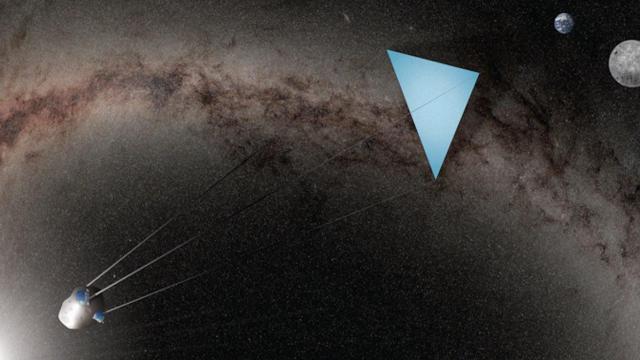The solution for protecting the planet from some of the sun’s rays could be a space “umbrella.” A study published the scientific journal PNAS in June outlines a University of Hawai’i researcher’s plan for hitching an umbrella or shield onto an asteroid to block some of the sun’s rays.
István Szapudi, an astronomer at the University of Hawai’i’s Institute for Astronomy, explained in the study that a shield attached to an asteroid could be developed in the future to mitigate climate change. According to the study, this could shield the planet from 1.7% of sun rays, which could slow down planetary warming.
“In Hawaiʻi, many use an umbrella to block the sunlight as they walk about during the day. I was thinking, could we do the same for Earth and thereby mitigate the impending catastrophe of climate change?” Szapudi said in a press release.
During a call with Earther, Szapudi described the asteroid umbrella like kite surfing. Instead of wind, the force that moves the sail will be the radiation from the sun that hits the shield and transfers enough momentum to move it. Though it catches the imagination, Szapudi’s idea isn’t possible just yet. Our current rockets cannot exert enough force to carry a large shield out into our solar system. If a method for doing this becomes possible in a few decades, then this theory could maybe, possibly, theoretically, become a realistic climate solution.
Szapudi told Earther that the paper released at the end of July could be the start of future innovation. He thinks following research could include working with asteroid experts to identify asteroids that could be manipulated to move around the Earth and block sunlight.
According to Szapudi, another factor in making his idea a reality is creating simulations of the sun shield. Future research would have to be conducted to calculate how the shield could be manufactured and assembled, how it would get into outer space, and if parts of the shelf would have to be assembled in space.
“I want to see whether there is a simple cost-effective way [to do this],” he told Earther. “It’s just the very first step in a big journey,” he said.
Many other climate change mitigation geoengineering projects have been proposed, and some of these suggestions have also involved outer space. Last year, a team of researchers at the Massachusetts Institute of Technology announced an idea that included sending a huge raft of “bubbles” into outer space. The raft would be positioned between the Earth and the Sun. Theoretically, it would be big enough to deflect sunlight away from the planet to slow down some of our global warming.
Other proposed space ideas are a little scarier. Just this year, a group of researchers at Harvard and the University of Utah proposed a solution to shoot millions of tons of moon dust into Earth’s orbit. The dust would be enough to block out the Sun’s rays. But like the solution suggested in the study from the University of Hawai’i, these other geoengineering solutions are still theoretical. Technology would need to advance in order for these solutions to become possible one day.
Szapudi emphasised that geoengineering ideas, like the sun shield attached to an asteroid, are one part of mitigating the climate crisis. “We probably have to do a number of things to mitigate climate change, and this might be one of them,” he said. “Every solution needs to be explored.”
